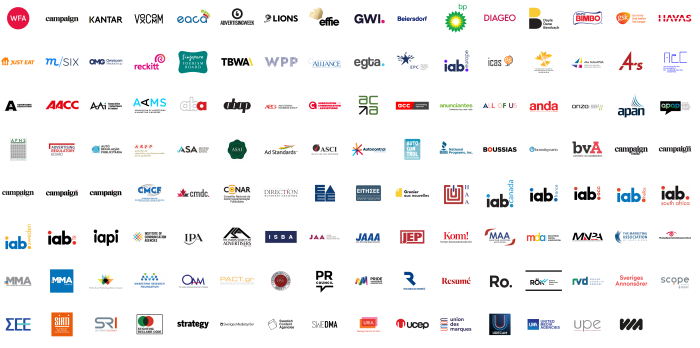Industry’s unprecedented show of unity to tackle DEI
More than 100 organisations have come together behind the first-ever global diversity, equality and inclusion census of the marketing industry. WFA’s Camelia Cristache and Will Gilroy explain the size and importance of the initiative.
Share this post

Diversity is a big issue, not just for marketing but for society. Ensuring the industry is more diverse and inclusive is also an incredibly complex and multi-factorial challenge. But at the WFA, we have been hugely heartened by the cross-industry support we’ve received in trying to address it.
The UK industry has been an inspiration. The Advertising Association, ISBA and IPA – partnering with Kantar – launched the All In Census in March, an initiative which saw close to 17,000 people in UK advertising and marketing services respond to questions about the socio-demographics and inclusiveness in their industry.
This helped provide a blueprint for a global study, which we are now running across 27 countries. WFA’s national associations – the sister organisations to ISBA – are driving the samples locally alongside their agency association counterparts – the local equivalents of the IPA. The data from the All In Census in the UK will be added to these responses.
And all this is being supported by Haymarket's Campaign, Kantar, Advertising Week, Cannes Lions, the Effies, Global Web Index and, critically, the agencies associations EACA and VoxComm. Big global companies like Diageo, Heineken and GSK as well as agency holding groups including Omnicom, WPP and Havas are cascading the survey down through their own organisations in what has been an unprecedented show of industry unity.
On top of that, we have been supported by a long list of trade bodies representing European sales houses (egta), global and European advertising standards authorities (ICAS and EASA), publishers (EPC) and tech (iab Europe).
But it’s been far from easy. No-one has ever done a global industry survey interrogating the state of diversity and inclusion in our industry, in part because the rules about what you can and cannot ask of people are very different from country to country.
And diversity means different things in different countries and regions. In some markets the challenge is gender diversity, in other it’s religious beliefs, sexual orientation or issues relating to age. Few things are more culturally specific.
We have had weeks of back and forth between Kantar’s London-based lawyers and our national associations and their lawyers to develop a local survey with an English text and a local translation that properly reflects local laws and cultural sensitivities.
And, of course, while we have branded it The Global DEI Census, it is not strictly speaking a census because we cannot demand everyone in the industry completes it. Given that it asks for personal and sensitive information, it has to be opt-in, meaning the sample is open to bias.
But this complexity can’t be an excuse for inaction. We need a global industry baseline, a first-ever global picture of diversity in all its forms, which can enable our industry to devise a global action plan and help develop the tools and processes for what is most needed and where. This can then help feed into local action plans. Because change can only really be led locally.
The research is needed now more than ever. The pandemic has magnified many inequalities, not just at a societal level, but in our profession too. We hear stories that some efforts on DEI have been delayed or stopped. There are also indications in some markets that women are leaving the profession.
It’s time to draw a line in the sand and say that none of this is good enough. But we can only do that if we know where we actually are today. Because only by understanding what the real situation is today can we get where we want to be tomorrow.
What gets measured matters, as the saying goes.
We know that there are lots of people collecting different data on diversity around the world. We don’t aim to replace those efforts but rather build on them and complement them. Critically, we are not just tracking sociodemographic data but also asking people about their sense of belonging and perceptions of progressiveness.
And this can’t be a flash in the pan. We will conduct it again in 18 months with a view to measuring change and then systematically after that as well.
It’s been an incredibly big undertaking but it’s been heartening that so many people have wanted to be part of a genuinely inclusive effort to do something that's a genuinely good thing to do.
In taking this approach we have behaved like a grown-up industry. We’ve acknowledged the challenge and we are gathering the data to tell us the scale of that challenge. Once we have that information we can talk seriously about what needs to be done. That conversation begins in earnest in the autumn.
This article originally appeared in Campaign here.


